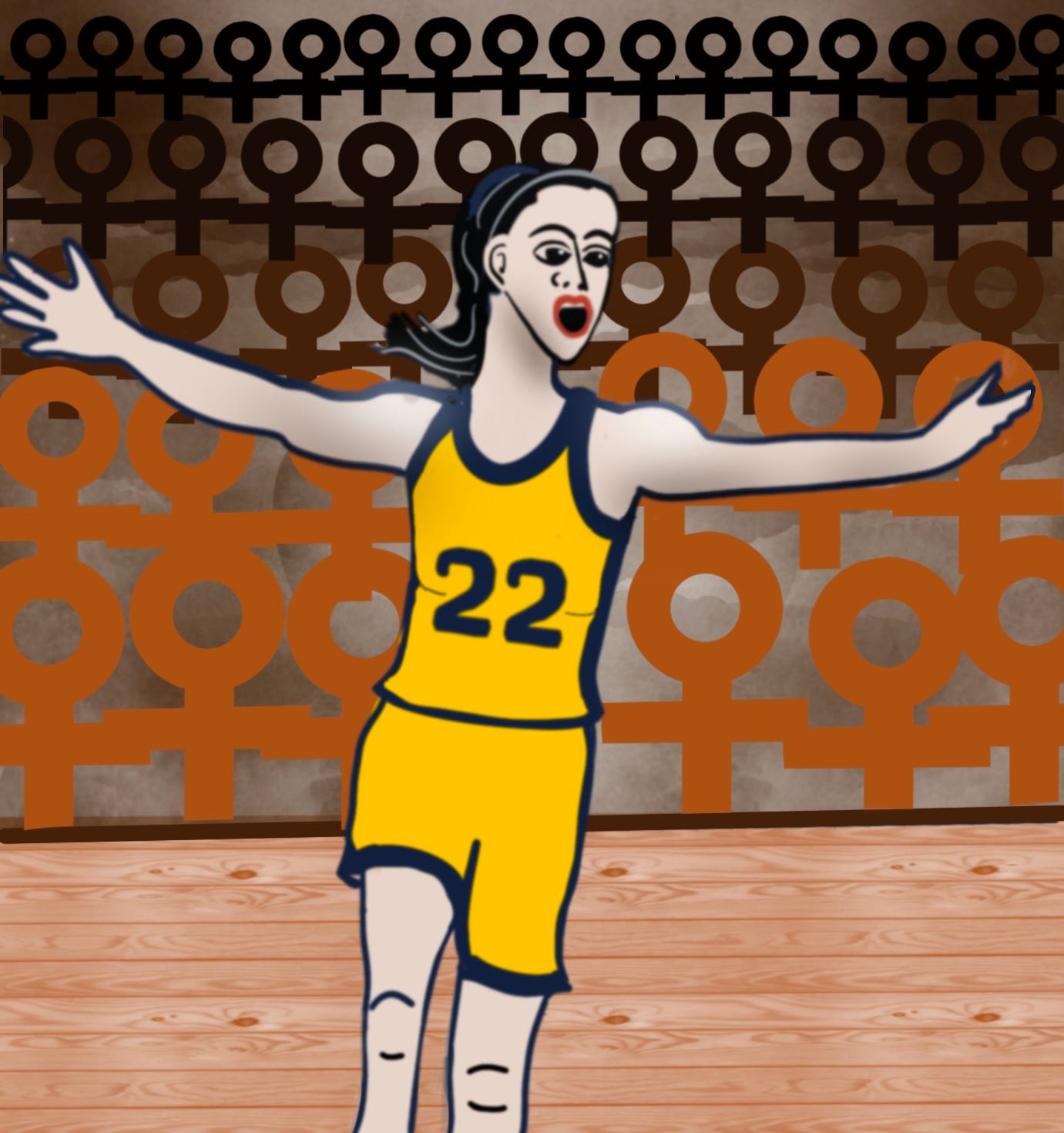Hi friends, subscribers, newcomers. Thanks especially to Founding Members and Paid Subscribers.
In the wake of the WNBA draft, I’m looking forward to seeing how Caitlin Clark compares to older, more experienced players. Female players, that is.
Last month, rapper Ice Cube offered logo-shooter and passer extraordinaire Caitlin Clark $5 million to play in the Big3. The Big3 is a three-on-three basketball tournament featuring former NBA athletes. Playing there would not affect Clark’s WNBA season — unless she gets injured or publicly shamed by being trounced by the bigger, stronger, heavier male players.
Of the 12 teams, two are coached by women: legendary athletes Lisa Leslie and Nancy Lieberman. But none of the players are women.
How would Clark fare?
Like many female athletes, Clark has already played against men. Women’s college basketball teams commonly employ male practice players – former high school hoopsters – to challenge the women in practice. Why? Because men are, on average, bigger, stronger, and faster than women.1 Coaches implement strict rules to limit male aggression to keep the female players from getting injured.
I used to play basketball against men, too. When women do this we learn in a visceral way how solid (and sweaty) male athletes are. Like slippery boulders.
Three good reasons Clark should not accept:
1) She has a female frame. Clark is six feet tall and weighs 154. The average NBA player is 6’6” and weighs 215.
2) It’s a setup for failure. All-American and Olympic silver medalist Ann Myers’ televised tryout with the Indiana Pacers in 1979 was a public humiliation that included a painful airball. Women everywhere cringed as Myers, 5’9”, struggled to keep up. This is the risk when women compete publicly with men. (Billie Jean King’s “Battle of the Sexes” vs. Bobby Riggs in 1973 was a rare exception. But Riggs was 55.)
3) It’s the wrong category — like asking lightweight boxers to compete against heavyweights. The female sports category creates an even playing field where women’s unique talents can be displayed and celebrated without comparison to men. That’s the whole point of women’s college basketball and the WNBA: All women. No men.
Don’t do it, Caitlin. It doesn’t matter how you compare to men. You’ve pocketed $3.4 million already and Nike has reportedly offered you $28 million. Having wowed millions during your spectacular college career and having been drafted #1 by the Indiana Fever in the WNBA, you’re right where you belong.
Your thoughts? All comments welcome.
Men have greater strength, size, speed, and muscle mass. They have larger hearts, lungs, hands, feet, and skulls. (In a typical year, the fastest high school boys are faster than the fastest female Olympians in every swimming and track and field event except the 5000-meter run.) Women have more body fat, along with monthly periods and sometimes pregnancy and lactation. These enormous sex differences result in performance advantages for men in almost every sport, including basketball.






I agree. This seems like a ridiculous circus stunt set up to enrich someone else. It's all downside for Caitlin. She should start training for professional women's basketball; I'm sure that it's very different than the college game, and she needs to be in shape and adding tools to her kit. Her time would be best spent with veterans on the Fever squad. Just say "No", Caitlin.
Thank you. Your post reminded me of the outburst Lindsey Vonn caused by her desire to compete against men. Only then it was she, the athlete to offered the challenge. One needs to ask why. Maybe the female athletes feel they have to prove themselves somehow...I don't know.